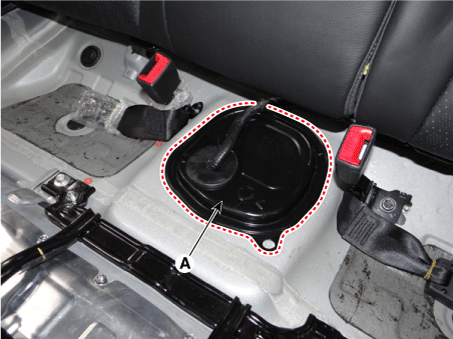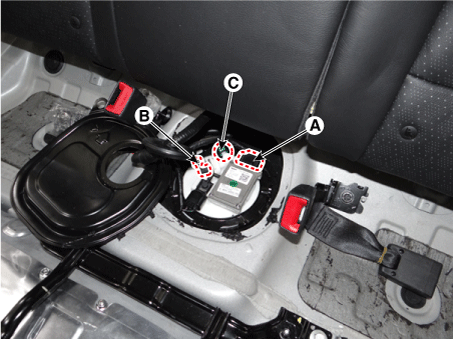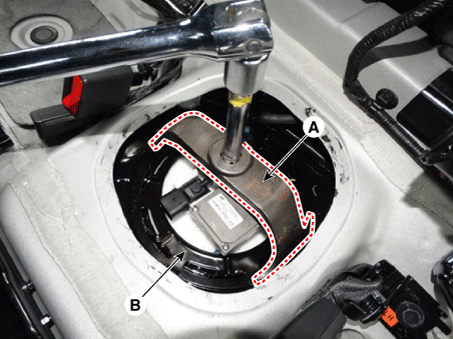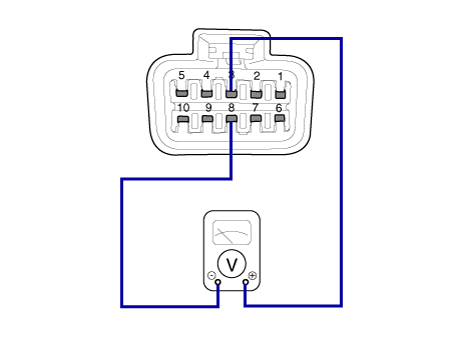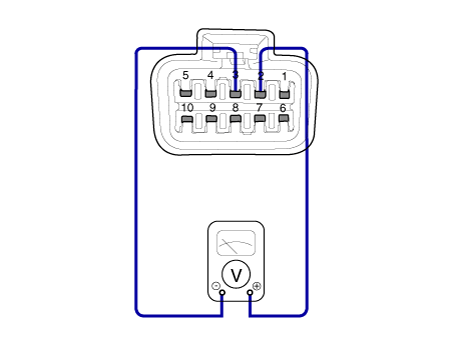Kia Niro: Fuel Delivery System / Fuel Pump Control Module (FPCM) Repair procedures
| Removal |
| 1. |
Switch "OFF" the ignition and disconnect the negative (-) battery terminal. |
| 2. |
Remove the rear seat cushion. (Refer to Body - "Rear Seat Assembly") |
| 3. |
Fuel pump service cover (A).
|
| 4. |
Remove the fuel pump control module connector (A). |
| 5. |
Disconnect the fuel pressure sensor connector (B). |
| 6. |
Disconnect the fuel feed tube quick-connector.(C).
|
| 7. |
Remove the fuel pump plate cover (B) by using the special service tool (A) [SST NO.:09310-B8100].
|
| 8. |
Remove the fuel pump (A).
|
| Installation |
| 1. |
Install in the reverse order of removal.
|
| Inspection |
| 1. |
Connect the KDS/GDS to the vehicle's data link connector (DLC). |
| 2. |
Check for DTCs and repair any according to the DTC guide. |
| 3. |
Check the power supply voltage provided to the fuel pressure sensor (FPS).
|
| 4. |
Check the voltage provided to the fuel pressure sensor (FPS) at idle.
|
| 5. |
Check the fuel pressure in the low fuel line. (Refer to Fuel Delivery System - "Fuel Pressure Test") |
 Fuel Pump Control Module (FPCM) Schematic diagrams
Fuel Pump Control Module (FPCM) Schematic diagrams
Circuit Diagram
Terminal Information
Terminal Illustration
Terminal Function
Pin No.
Description
...
 Fuel Pressure Sensor (FPS) Specifications
Fuel Pressure Sensor (FPS) Specifications
Specification
Pressure [kPa (kgf/cm², psi)]
Output Voltage (V) [Vref = 5V]
50 (0.51, 7.3)
0.3
600 (6.12, 87.0)
...
Other information:
Kia Niro 2017 (DE HEV) Service Manual: Special service tools
Special Service Tools
Tool(Number and Name)
Illustration
Use
09581- 2T100
Piston expander
Used for compressing front
09580 - 0U000
Brake piston adjuster
...
Kia Niro (DE HEV) Owners Manual: Charging System Warning Light
This warning light illuminates:
Once you set the ignition switch or Engine Start/Stop Button to the ON position.
- It remains on until the engine is started.
When there is a malfunction with either the alternator or electrical charging
system.
If there is a malfunction with either th ...

